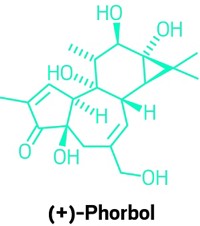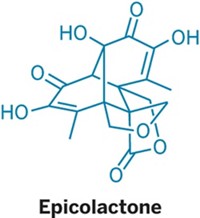Advertisement
Grab your lab coat. Let's get started
Welcome!
Welcome!
Create an account below to get 6 C&EN articles per month, receive newsletters and more - all free.
It seems this is your first time logging in online. Please enter the following information to continue.
As an ACS member you automatically get access to this site. All we need is few more details to create your reading experience.
Not you? Sign in with a different account.
Not you? Sign in with a different account.
ERROR 1
ERROR 1
ERROR 2
ERROR 2
ERROR 2
ERROR 2
ERROR 2
Password and Confirm password must match.
If you have an ACS member number, please enter it here so we can link this account to your membership. (optional)
ERROR 2
ACS values your privacy. By submitting your information, you are gaining access to C&EN and subscribing to our weekly newsletter. We use the information you provide to make your reading experience better, and we will never sell your data to third party members.
Synthesis
Synthesis Strategy Goes Online
Natural Products: Free Internet tool helps chemists tackle complex polycyclic molecules
by Bethany Halford
December 16, 2015
| A version of this story appeared in
Volume 93, Issue 49

When constructing complex polycyclic natural products from simple molecules, chemists must first develop a bond-building strategy. There are many possible ways to attack that problem: One approach is to mimic nature’s biosynthetic pathway; another is to tackle the most complex region of the molecule’s ring system—a method known as network analysis. Chemists led by University of California, Berkeley, chemistry professor Richmond Sarpong used the latter in their total syntheses of weisaconitine D and liljestrandinine, but the chemists also added an Internet-age twist: They’ve created a website that anyone can use to apply network analysis to their molecules.
Created in partnership with Cadre Research Labs, the website—cadrerl.com/maxbridge—will perform network analysis on certain types of structure files, free of charge, to help chemists plan their synthetic strategies (Nature 2015, DOI: 10.1038/nature16440).
Previous approaches to computer-assisted design of syntheses weren’t easy to use and just spat out a proposed synthetic route, which chemists often disagreed with.
The new website, Sarpong says, provides a starting point. Everything else is up to the chemist’s imagination. “There is this human element where one can make quantum leaps in terms of how we make molecules,” he says.
Sarpong says his group’s network analysis approach to weisaconitine D and liljestrandinine was inspired by two giants in the field of natural product synthesis: Harvard University’s E. J. Corey and UC Berkeley’s Clayton Heathcock. “These are people who have taught the community about how to think about topologically complex molecules,” Sarpong says.
Weisaconitine D and liljestrandinine are both inhibitors of voltage-gated sodium and calcium channels—important targets for pain relief and cardiac health. The Sarpong synthesis strategy opens the door to making analogs of this family of diterpenoid alkaloids for drug discovery.
The Sarpong group’s synthesis is “a forceful reminder that unique strategies can be just as important as new methods in complex molecule total synthesis,” comments Phil S. Baran, an organic synthesis expert at Scripps Research Institute California.





Join the conversation
Contact the reporter
Submit a Letter to the Editor for publication
Engage with us on Twitter